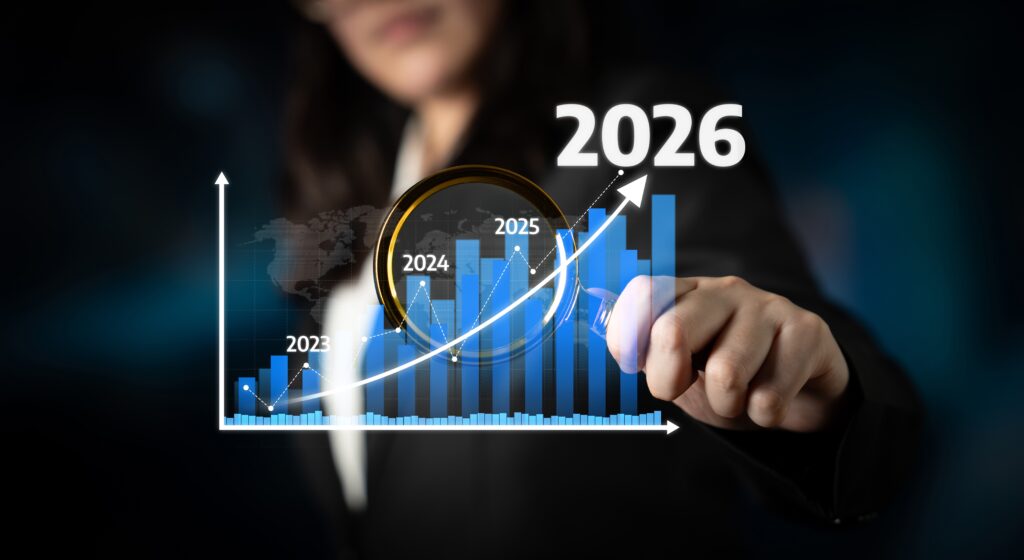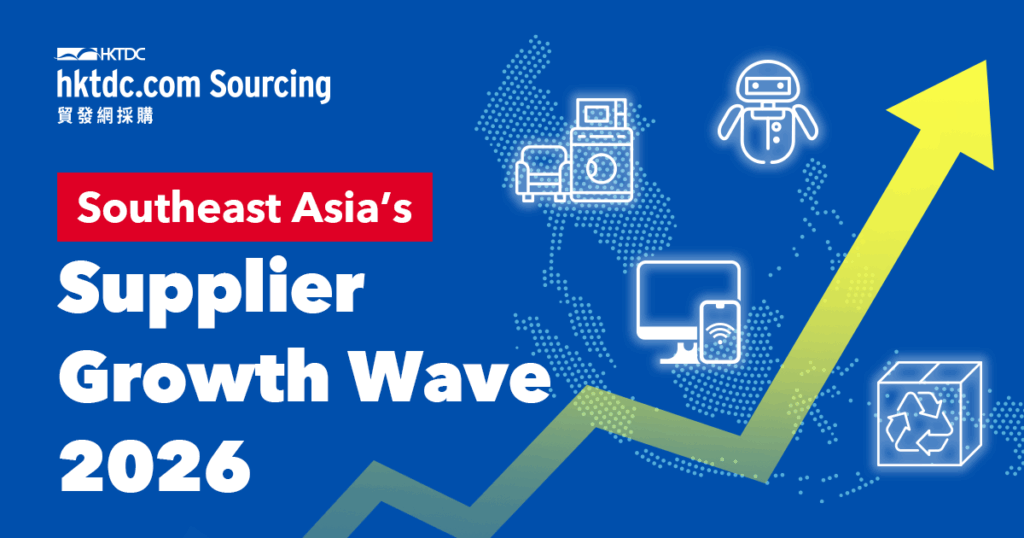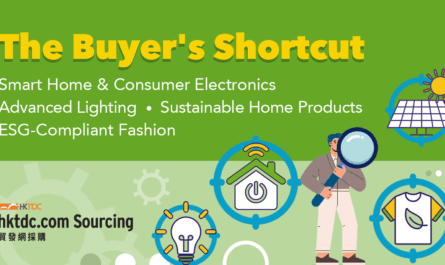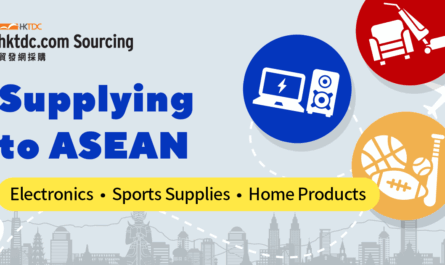Southeast Asia Steps Into the Spotlight
As the global trade landscape rapidly diversifies, Southeast Asia has advanced from alternative to essential partner in the international supply chain. Global manufacturers, retailers, and e-commerce giants are accelerating their ‘China +1’ strategies, placing record levels of procurement orders and investment into ASEAN economies (For clarity: “Southeast Asia” refers to the whole region including Vietnam, Thailand, Malaysia, Indonesia, the Philippines, Singapore, Cambodia, Laos, Myanmar, Brunei, and Timor-Leste. “ASEAN” is the Association of Southeast Asian Nations—a bloc of 10 member countries, all of the above except Timor-Leste.). ASEAN plays a central role in enhancing cross-border trade and driving regional economic integration through initiatives such as the ASEAN Economic Community (AEC) Blueprint 2025 and digital economy frameworks. Southeast Asia is now forecast to power up to 40% of dual-channel supply for major brands by financial year 2026, with projections to exceed 60% by 2027. This regional ascent is not only about cost: it’s fueled by a combination of rising skill bases, technology adoption, bold digital transformation, and a fresh wave of government-backed industrial policies.
Viewed in 2025’s rearview mirror, the lesson is clear: countries that invested in manufacturing resilience—balancing price, quality, and sustainability—are the new global winners. For Southeast Asia’s suppliers, this is a historic opportunity to gain visibility, access global buyers, and cement long-term partnerships in sectors where the region’s strengths now stand out.
Supplier Growth Momentum—2026 and Beyond
The Strategic Shift
Southeast Asia’s evolution into a strategic export powerhouse is driven by macroeconomic and geopolitical forces. The region’s B2B digital commerce market surpassed $90 billion in 2024 and is set to reach $130 billion by 2026, with trade agreements, digitization, and supply chain resilience at the core. Leading global buyers are migrating procurement to Vietnam, Malaysia, Thailand, Indonesia, and the Philippines for consumer electronics, green products, furniture, and advanced manufacturing. This shift delivers greater security against tariff risk, logistics shocks, and supply bottlenecks.
New research shows resilient, modular supply networks and “just-in-case” inventory strategies will be central to 2026’s winning supplier playbook, with ASEAN-based suppliers uniquely positioned for regional buffer capacity and rapid scale-up. Supply partnerships are also evolving: buyers want suppliers who can co-develop products, innovate in design, and deliver consistent quality—not just fulfill low-cost orders.
Category Analysis: Country-Specific Opportunities & Trends
1. Consumer Electronics & Smart Devices
Southeast Asia is now a global force for electronics and smart device manufacturing, driven by heavy foreign direct investment (FDI) and rising local capability.
- Vietnam has rocketed to the forefront, with electronics exports surpassing $126 billion as of 2024—driven by an expanding range of major production hubs, robust foreign direct investment, and a growing cohort of local manufacturers. Accelerated adoption of IoT, mobile, and home automation technologies has fueled double-digit growth in both computer components and finished electronic goods.
- Malaysia is ASEAN’s E&E (electrical and electronics) engine, headquartering regional robotics and advanced design for smart devices. Its electronics sector saw record exports, and Malaysia’s “Industry 4.0*” adoption is fast-tracking robotics and data-driven manufacturing.
- Thailand remains a top supplier for automotive electronics and smart home integration, while expanding IoT startup activity is unlocking new SME opportunities.
Digital procurement and rapid quoting now dominate this sector. Suppliers who clearly communicate certifications, integrate comprehensive digital catalogs, and offer smart, customizable products are consistently winning new global orders.
Unlock new global demand for electronics and smart tech—get discovered by more buyers on hktdc.com Sourcing, the region’s trusted trade platform.

2. Green & Sustainable Products
Eco-packaging, upcycled materials, and natural resource-based products represent the fastest-growing B2B export segment in Southeast Asia, reflecting both regulatory and end-buyer demand for low-carbon supply chains.
- Indonesia leads in natural materials—bamboo, rattan, palm leaf—and upcycled eco-goods, earning a reputation for both price and scale in global eco-packaging exports. Indonesia’s sustainable packaging suppliers report 15–20% annual growth, with bioplastic investments and raw material access fueling cost competitiveness.
- Thailand is at the forefront of the bio-circular-green (BCG) economy, with startups and national policies supporting upcycling, compostable packaging, and renewable fibers used in both fashion and home sectors. Thailand’s coordinated government incentives now attract the world’s top buyers for eco-packaged OEM supply.
- Philippines powers premium coconut-based, natural, and bioplastic products, and has rapidly expanded export of recycled crafts and small-batch sustainable items, especially to Western and Japanese buyers.
As Southeast Asian manufacturers grow their ESG credentials, the ability to offer traceability, carbon footprint data, and compliance with new EU/US regulations is crucial. Local access to raw materials makes ASEAN a hub for reliable, low-impact green solutions—helping global buyers fulfill sustainability mandates.
Capture global eco-conscious buyers—join hktdc.com Sourcing to showcase your sustainable materials and products with international partners.
3. Home, Furniture & Decor
Riding a boom in urbanization and e-commerce, Southeast Asia’s furniture and home décor exports are forecast to reach $24.8 billion by 2030, up from $14 billion in 2023—outpacing many global competitors at a CAGR of 8.5%. The region excels at combining artisanal craftsmanship with digital retail and contemporary design.
- Vietnam is a top exporter of wooden and sustainable furniture, mixing traditional latticework and modern lines to win commercial and residential orders worldwide.
- Malaysia majors in luxury and durable furnishings, meeting international quality benchmarks and capturing hospitality and contract market upgrades. The shift to digital showrooms and virtual B2B tours is especially strong here.
- Indonesia is renowned for innovative rattan, eco-certified wood, and custom home accessories—backed by local associations helping SMEs get sustainability-certified.
- Philippines is gaining ground with design-driven, handcrafted décor and heritage weaving.
Southeast Asian suppliers benefit from the surge in online platforms and are leading in social media marketing, live e-commerce, and augmented reality technology—making it easier for buyers to visualize and order products remotely.
Expand your reach—list your home, furniture, or décor products on hktdc.com Sourcing and connect with buyers worldwide.

4. Industrial Supplies & Machinery
The region’s manufacturing maturity is most apparent in precision industrial goods, automation, and smart “factory of the future” solutions.
- Malaysia anchors ASEAN’s smart manufacturing, with precision engineering, robotics, and high-tech machinery exports propelling sector growth. Malaysia’s exports of machinery, boilers, and equipment exceeded $7 billion in 2024, with cross-border trade to Singapore and beyond driving B2B opportunity.
- Singapore is the region’s advanced logistics and “Industry 4.0” champion, investing in AI-driven supply chain platforms, automated warehousing, and export-ready medical/industrial device manufacturing.
- Thailand leads in machinery for agriculture and auto industries, expanding OEM production and innovating in mid-tier automated equipment.
Rapid adoption of digital supply chain tools, traceability, and flexible automation position these countries as more nimble partners for global brands wanting reliability and tech-forward collaboration.
Showcase your next-generation industrial products to buyers worldwide on hktdc.com Sourcing—start your export growth journey now.
Southeast Asia: 2026 Market Forecast & Resilience
Through 2026 and beyond, ASEAN is set to outpace traditional trade regions in both GDP and export growth. Stronger-than-expected economic results in Q2 2025 show robust activity across electronics, heavy industries, home décor, and sustainable goods, with Vietnam’s electronics sector alone driving a 7.5% GDP jump for the first half of the year.
Diversification, digital adoption, and leading roles in “green” and value-added categories will push Southeast Asia’s B2B export share even higher. Forecasts expect ASEAN’s total manufacturing and export trade value to grow by 6–8% per annum through 2027 for key sectors, leaving the region well-insulated from trade shocks or supply chain disruption.
With e-commerce and B2B digital platforms now essential, the fastest-growing suppliers are those who digitize their catalogs, integrate real-time translation and negotiation tools, and highlight certifications. Over 62% of ASEAN buyers (and their international partners) now report that digital trade tools save them a full week on every order cycle, along with increased visibility and expanded international business pipelines for firms embracing digital adoption. Digital platforms are increasingly regarded as a key driver of growth in Southeast Asia’s connected economy.

Supplier Toolkit FAQ: Your Most-Asked Questions for 2026
Q1: How can I make my products stand out to international buyers online?
A: High-quality product photos are absolutely essential—clear, well-lit images instantly build buyer trust and engagement, while blurry or missing images can turn buyers away. Make sure to provide sharp, professional pictures showing multiple angles and details; this is your single most important tool for winning international enquiries. Supplement quality images with downloadable spec sheets, certificates, and compelling storytelling to highlight key selling points. Respond quickly to enquiries—60% of buyers award suppliers who engage fast and provide market-specific information. Good images not only boost trust, but can increase conversion rates by up to 30% and reduce costly returns associated with unclear or misleading visuals.
Q2: What certifications or quality marks are most requested by EU, US, and Asian buyers?
A: For electronics:
- ISO (such as ISO 9001 for quality management)
- CE (required for most products in Europe)
- UL (common for US markets)
For furniture:
- FSC (Forest Stewardship Council, for responsible wood and paper)
- BSCI (for ethical production)
- REACH (for chemical safety in the EU)
For green and sustainable products:
- Bioplastics certificate (shows plastics are compostable or biodegradable)
- Carbon-neutral certificate (proves your product or business is carbon neutral)
- FSC or PEFC (for wood/paper products)
Many buyers also ask for simple records that show how your product is made and where materials come from (“traceability”). This can include certificates, tracking numbers, or short reports. Sometimes, environmental claims need a carbon footprint label or a carbon-neutral certificate. Keep these documents organized and ready in digital form for easy sharing.
Q3: Is sustainability really a must-have for all suppliers, or only “green” sellers?
A: Yes—sustainability is now a basic requirement for all suppliers, not just those in the “green” sector. New laws in the EU and US, along with most global brands, now expect every supplier to show they are managing their environmental impact and using responsible practices—no matter what products they make. Having basic environmental data, simple certificates, or proof of traceability is now part of standard buyer checks. Adopting these practices helps you stay competitive and ready for future regulations, and it can make you a preferred partner for global contracts.
Q4: How do I break into new export markets and meet compliance requirements?
A: To break into new export markets and meet compliance requirements, start by checking the latest import regulations for your target country—official government or trade websites are best. Consider joining a sector association for practical tips and updates. Have your certification and product documents organized in advance so you can respond quickly to new buyers. If helpful, you can also use global B2B platforms such as hktdc.com Sourcing to guide your listing and double-check documentation, but this is just one of several options.
Q5: Can SMEs really compete with large regional players?
A: Absolutely. Many international buyers now prefer more agile, innovation-ready partners. Using verified credentials, digital showrooms, and rapid inquiry response, smaller firms are increasingly securing global contracts—especially when leveraging digital B2B platforms.
For suppliers across Southeast Asia, the transition to digital trade means bigger opportunities and new global markets—but also higher buyer expectations and fast-moving trends. Staying competitive now requires strong online visibility, proof of quality, and rapid responses to international enquiries. Platforms like hktdc.com Sourcing can make this easier, connecting you with quality buyers worldwide, supporting digital catalog management, and making it simpler to meet export, documentation, and compliance needs. Leveraging these digital solutions helps suppliers build trust, unlock export potential, and secure long-term growth in today’s connected economy.
Actionable Insights: Steps for 2026 Supplier Success
Beyond the fundamentals and FAQs above, here are a few extra strategies and reminders to help Southeast Asian suppliers strengthen their export performance and stand out in 2026:
- Prioritize automation, visible certifications, and transparency: Buyers demand more control, so sharing process/compliance data in real time is key.
- Leverage data-driven trade tools and live catalogs to build trust and open doors to bigger, cross-border contracts.
- Focus on value-add: From design innovation (homeware) to green material sourcing, the integration of tech and creativity sets the region apart.
- Accelerate digital transformation: Suppliers shifting online showrooms, virtual tours, and live negotiation tools are consistently winning larger deals and repeat business.
- Tap government and association support: Many countries now offer grants, digital adoption incentives, and export-readiness programs tailor-made for B2B growth.
Seize the Export Advantage—Join Southeast Asia’s Next Growth Wave
Southeast Asia’s resilience and ability to seize new global trade frontiers position its suppliers as partners of choice in a changing global economy. The opportunity for 2026 is enormous—but only for those ready to connect, digitize, and meet global buyer expectations.
Be part of the ascent: join hktdc.com Sourcing today to reach international buyers, build credibility, and ride the region’s growth momentum for years to come.
Footnote
*Industry 4.0 (the Fourth Industrial Revolution): the use of intelligent digital technologies—including IoT, automation, AI, and big data—to create smart, interconnected factories and supply chains that improve productivity, flexibility, and decision-making in manufacturing.
Southeast Asia Market Data, Export Trends, and Buyer Insights
Statista, Euromonitor International, Mintel, McKinsey, NielsenIQ, Grand View Research, Frost & Sullivan, Mordor Intelligence, HKTDC International Buyer Sourcing Behaviour Survey 2025, ASEAN Secretariat, Asian Development Bank
Product Category Growth & Digital Commerce
GWI, Deloitte, Kantar, Gartner, JD.com Research Institute, Vietnam Customs Statistics, Malaysia External Trade Statistics, Thailand Board of Investment, CAICT, HKTDC Research
Sustainability, Green Products, and Compliance
IMARC Group, FSC International, PEFC International, Global Organic Textile Standard (GOTS), BSR, PwC, ISO, Intertek CarbonZero, SCS Global Services, EU REACH, US EPA, Singapore Food Agency, Food Safety Authority of Hong Kong
Manufacturing, Industry 4.0, and Robotics
Malaysia MITI Industry4WRD, Singapore Economic Development Board, Thailand Industry Ministry, World Economic Forum, Accenture, International Federation of Robotics
Retail, E-commerce, and B2B Digital Platforms
Shopify, Martal Group, OrdersInSeconds, LinkedIn B2B Institute, Forrester, TrustMary, Salesforce, The Drum, Ironpaper
Brand, Buyer Communication, and Export Readiness
Communication Trends from SEMrush, Ahrefs, Pop Mart Financial Reports, China Academy of Information and Communications Technology (CAICT), JETRO (Japan External Trade Organization)







